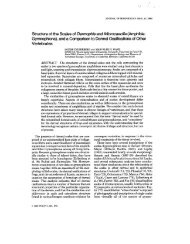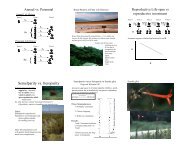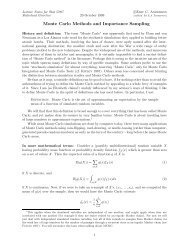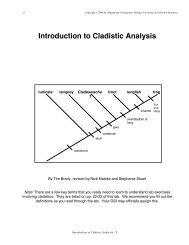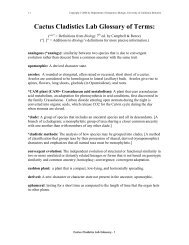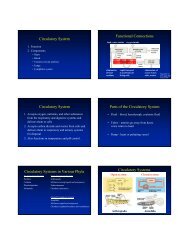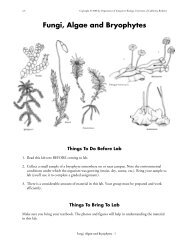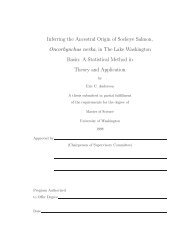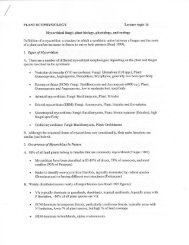Using ecological niche modeling for quantitative biogeographic ...
Using ecological niche modeling for quantitative biogeographic ...
Using ecological niche modeling for quantitative biogeographic ...
You also want an ePaper? Increase the reach of your titles
YUMPU automatically turns print PDFs into web optimized ePapers that Google loves.
602 KAITLIN C. MAGUIRE AND ALYCIA L. STIGALL<br />
FIGURE 5. GARP predicted distribution maps. A, Cormohipparion occidentale Barstovian–Clarendonian model projected<br />
onto the Barstovian–Clarendonian environmental layers. B, C. occidentale range when the Barstovian–Clarendonian<br />
model is projected onto the Hemphillian–Blancan environmental layers. C, C. occidentale Hemphillian–Blancan model<br />
projected onto the Hemphillian–Blancan environmental layers. D, C. occidentale range when the Hemphillian–Blancan<br />
model is projected onto the Barstovian–Clarendonian environment.<br />
are not normally distributed even after log,<br />
square root, and arcsine trans<strong>for</strong>mations were<br />
applied (Tables 9, 10).<br />
Results and Discussion<br />
Geographic ranges were modeled <strong>for</strong> 18<br />
equid species from the Barstovian–Clarendonian<br />
time slice and 13 species from the<br />
Hemphillian–Blancan time slice (Table 1,<br />
Fig. 4). All modeled ranges are included in<br />
the online Supplementary Material.<br />
Habitat Fragmentation<br />
During the Barstovian–Clarendonian time<br />
slice, species ranges were divided into more<br />
discrete populations or patches than during<br />
the Hemphillian–Blancan time slice (twosample<br />
t-test, p 5 1.15 3 1024 ) (Table 6, cf.



